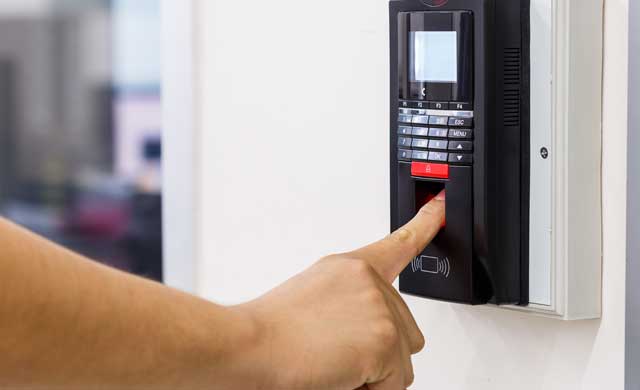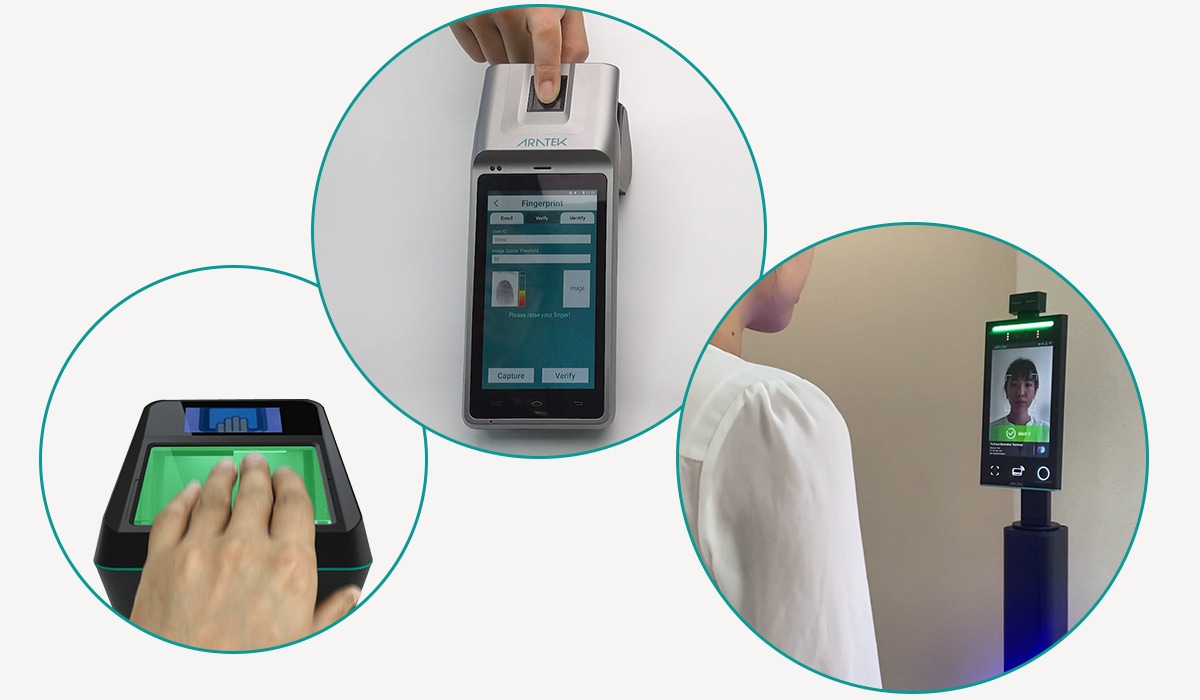Unveiling the Power of Biometric Scanners: Understanding, Classification, And Applications
Introduction
In a world increasingly dependent on technology and security, biometrics finds its widespread use. As an advanced layer of personal identification, the use of biometric scanners has transformed security on several levels. This insightful guide takes you through understanding what biometric scanners are, how they function, the different types available, their applications, and their reliability. The guide will help you comprehend the power and potential that biometric scanners hold in curbing security breaches and enhancing the effectiveness of access controls in various sectors.
What Are Biometric Scanners?
Biometric scanners are an integral part of today's technology-driven world, acting as the gatekeepers of digital and physical security. To truly understand their revolutionary role, let's break it down:

- Biometric Interface: These scanners operate as advanced security tools, designed to authenticate and validate an individual's identity based on unique physiological or behavioural traits.
- Unique Attributes: Leveraging unique biological data like fingerprints, facial features, or iris patterns, these scanners are in many cases almost impossible to breach.
- Digital Transformation: Biometric scanners convert this biological data into digital information, enabling computers to process and analyze it.
- Unparalleled Security: As part of modern digital security systems, they offer a robust defense line, making them paramount to protecting valuable data.
So challenge your understanding of the usual 'scanner' – because biometric scanners are a class apart, designed for advanced settings and superior defense.
How Do Biometric Scanners Work?
Step 1: Gathering and Storing Data
The functionality of biometric scanners starts with the collection and storage of biometric data. This is a critical phase where the unique biological or behavioral traits of an individual are captured and converted into a digital format. The scanner utilizes sensors to accurately capture these traits. The data is then processed using complex algorithms to create a biometric template, which is effectively a mathematical representation of the scanned data. As a final step, this digital information or template is securely stored for future use.
Step 2: Comparing Data
The second important stage in the working of a biometric scanner is data comparison. Every time a user interacts with the scanner, it captures the current information and converts it to a digital format, similar to the original data collection process. The scanner then compares this data with the stored biometric template. An algorithm will analyze and compare the two sets of data to look for matches. If there is a match, the scanner confirms the identity of the user, effectively granting them the required access or approving the specified transaction.
When you break it down, the effective functioning of biometric scanners can be viewed as just a two-step process: data collection & storage and data comparison. This simplicity, coupled with the high-trust value of the inherent biometric markers, is what makes biometric scanners an appealing solution for today's demanding security applications.
What Are Different Types of Biometric Scanners Available?
There exist a variety of biometric scanners, each utilizing distinct features to authenticate individuals. Here are the three prime types to help you understand the vast spectrum:
Fingerprint Recognition
One of the most common and oldest forms of biometric scanning technologies, fingerprint recognition creates digital representations of individuals' unique fingerprint patterns. Its exclusive advantages include:
- Well-established technology: Used for verification for over a century.
- High degree of uniqueness: Each individual has a distinct fingerprint pattern.
However, the technology faces few criticisms such as:
- Possibility of spoofing: Faked fingerprints can sometimes fool the system.
- Receptivity to surface conditions: Dirty or greasy fingers can affect scan accuracy.
Facial Recognition
Facial recognition technology, powered by sophisticated AI, maps the geometry of individuals' faces, offering a touchless verification mechanism. This type includes:
- Enhanced convenience: Touch-free, passive data collection.
- Uniqueness: Face geometry is unique to each individual.
Nonetheless, potential downsides involve:

- Sensitivity to Lighting: Insufficient or excessive light can affect the scan.
- Age effect: Alterations in an individual’s face due to ageing can impact the accuracy.
Iris Recognition
Possibly the most secure type, Iris recognition technology analyses patterns in the colored ring around the pupil. Known for its:
- Accuracy and Uniqueness: Iris patterns are intricate and unique to each individual.
- Stability: Iris patterns remain unchanged throughout an individual's lifespan.
However, it’s not without its cons:
- Distance limitations: The technology can only scan from a narrow distance range.
- Dependency on Eye Visibility: Glasses or contacts may affect the ability to capture iris images accurately.
Revolutionizing the security landscape, these scanners ensure security isn't compromised. Yet, selection should be strategic, based on the needs and context of usage.
In What Ways Are Biometric Scanners Utilized?
Regarded as the epitome of modern security, biometric scanners provide an added layer of unbreachable protection across numerous sectors due to their superior identity verification capabilities. The scanners capture unique human attributes that are highly individual-specific making them virtually impossible to replicate. Here are some of the arenas where these innovative devices find their application:
- Access Management in High-Security Zones: Biometric scanners are significantly used in high-security areas like military bases, nuclear power plants, and research facilities, where access is granted only to authorized personnel based on their unique bio-identifiers.
- Attendance Tracking in Corporate Settings: Organizations have started leveraging biometric scanners to record employee attendance. This system ensures reduced chances of ‘buddy punching’ as the authentication is employee-specific.
- Border Control & Immigration: Airports use biometric scanners for immigration control, enhancing security by preventing any unauthorized access.
- Consumer Electronics: Biometric authentication in smartphones and laptops helps protect the users' privacy by restricting device access only to the registered user.
- Smart Homes: Biometric scanners are being increasingly used in smart home technologies, providing personalized settings and added security.
- Election Commissions: Some countries have adopted biometric voter registration systems, ensuring that each vote cast is legitimate.
- Healthcare Industry: Hospitals and clinics are leveraging biometric scanners for patient identification, minimizing the risk of identity fraud and ensuring the correct patient gets the right treatment.
- Law Enforcement: Law enforcement agencies use biometric scanners for crime scene investigations, identifying suspects, and tracking criminal activities.
In conclusion, biometric scanners, due to their exceptional ability to identify unique biological traits accurately, have transformed security protocols and procedures across multiple sectors.
How Secure and Reliable Are Biometric Scanners?
Biometric scanners inherently provide a high level of security due to their nature of capturing unique individual traits. Nonetheless, like any other technology, they are not entirely foolproof. Let’s break this down and examine both the strengths and weaknesses of these scanners:
Strengths
• Uniqueness: Since biometric scanners verify identity based on exclusive physiological or behavioral characteristics, it reduces the chance of unauthorized access immensely.
• High Recognition Accuracy: Owing to advanced technologies, biometric scanners typically boast extremely low False Acceptance Rates (FARs) and False Rejection Rates (FRRs). This assures high accuracy in identity confirmation.
• Non-transferable: As biometric data is strictly person-specific and cannot be transferred or duplicated, it offers an added layer of security.
Challenges
• Vulnerability to Data Breaches: Biometric databases could potentially be a tempting target for cybercriminals. If hacked, the data could possibly be misused for identity theft or fraudulence.
• Infallibility: Though rare, there have been incidents of biometric scanners being spoofed, tricking the scanner with a fake biometric input.
• Privacy Concerns: The storage of sensitive biometric data raises privacy issues, as individuals might not be comfortable sharing such personal data.
To sum up, while biometric scanners bring robust security strength, they should always be supplemented by other security measures and updated cybersecurity protocols. This hybrid approach to security ensures that the potential weaknesses of biometric scanners are duly compensated for by additional safety controls.
Conclusion
Biometric scanners are truly an innovation that has enhanced security measures across different sectors. Their capability to accurately identify a person based on unique attributes makes them a popular choice for various applications. Thus, understanding how they operate and the types available would only benefit one in efficiently utilizing the technology.
Related FAQs about what is biometric scanners
Are all biometric scanners function in the same way?
No, not all biometric scanners function in the same way. Their functioning depends on the type of biometric data they've been designed to process. For instance, fingerprint scanners work by analyzing patterns in an individual's fingerprints, facial recognition scanners utilize detailed maps of individuals' faces, and iris scanners read unique patterns in the colored ring around the pupil.
What industries benefit the most from biometric scanners?
Biometric scanners are highly beneficial across numerous industries. Key sectors include security (access control in high-security areas), corporate (employee attendance tracking), aviation (border control and immigration), consumer electronics (smartphone and laptop security), smart homes, election commissions (voter verification), healthcare (patient identification), and law enforcement (crime scene investigations).
How does a biometric scanner enhance security?
Biometric scanners enhance security by providing a reliable means of personal identification based on unique physiological or behavioural traits. By leveraging these unique bio-identifiers, biometric scanners offer high-accuracy identity verification that is difficult to duplicate or forge, thereby significantly reducing the likelihood of unauthorized access or identity fraud.


